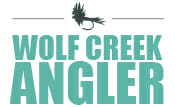Hoot Owl Comes to the MO

As drought conditions persist in the region, FWP announced additional waterbody closures and restrictions yesterday including Hoot Owl Restrictions on the Missouri from Holter Dam to Cascade.
Almost immediately following the announcement the pushback began from some citing that the criteria had not yet been met for Hoot Owl Restrictions referring to FWP’s water temperature threshold which states that max water temp of 73 degrees for three consecutive days trigger implementation of Hoot Owl Restrictions. Water temps however are not the only criteria triggering restrictions.
From FWP…
Flow below Holter Dam is near the 10th percentile for the daily average on record and the temperatures recorded throughout the section have exceeded 70 degrees Fahrenheit. Although flow and temperature are not exceeding established criteria for restrictions, continued forecast high temperatures coupled with high angling pressure could lead to excessive fish mortality, leading FWP to implement the restrictions.
Having made the decision to suspend new trip bookings for the remainder of the summer a couple of weeks ago and having voluntarily implemented Hoot Owl fishing hours on our existing guide trips, we are in full support of FWP for implementing restrictions on the MO and elsewhere.
We definitely understand the inconvenience of these restrictions and we sympathize with all of those who have traveled to Montana to fish this summer but we’re trying our best to focus on the big picture rather than the immediate impact of lost fishing opportunities for our guests and what has already amounted to thousands of dollars in lost revenue for our business.
This is about the preservation of the future of the fishery here on the Missouri and throughout the state of Montana. And while the effectiveness of these restrictions in limiting angler-induced fish mortality can be debated, our position is that doing something is better than doing nothing and if limiting our hours on the water helps even a little bit then it’s not that big of a sacrifice when you consider what’s at stake.
We hope for cooler conditions and we’d love to see restrictions lifted prior to September but in the meantime we’d like to share these tips for HOT WEATHER FISHING.
This past June for SW Montana ranked in the top 5 driest and hottest for SW Montana. Correspondingly, water temperatures are also greater than normal. Angling for trout under these warmer-than-usual conditions, fish become more impacted by catch-and-release, which increases the amount of time it takes them to recover and the chance that they will not survive.
Warmer water contains less oxygen than colder water. As temperature rises and dissolved oxygen decreases, fish begin to experience stress. These stresses occur well before the water temperature reaches lethal limits. For example, rainbow trout can survive in temperatures up to and exceeding 77°F (24°C), but stop growing at 73°F (23° C). Therefore, a fish, one which is already oxygen stressed while positioned carefully in current that minimizes its energy use, will be dramatically more stressed after being hooked and played to the net. In fact, in many cases, a fish otherwise properly handled and released under thermally-stressful conditions may be likely to not survive.
The following are best practices for angling during warmer weather:
• Carry a thermometer and stop fishing as water temperatures approach 68 degrees F.
• Use larger tippet sizes to decrease the amount of time playing a fish.
• Use a net.
• Get the fish as quickly as possible to the net.
• Use a dehooking tool to quickly remove the hook.
• Keep the fish in the water.
• Forego the grip-and-grin photo opportunities.
We don’t want to come off preachy, we’re just trying to do right by the resource. We’re not saying you shouldn’t fish, we just ask that you abide by thw restrictions the state has implemented in an effort to protect a fragile resource.
We’re open at 6 AM daily so you can get your day off to an early start and we’re happy to get you set up with what’s working and send you off to the spots where you are likely to have the most success.
Thank you for doing your part to take care of our precious resource.
